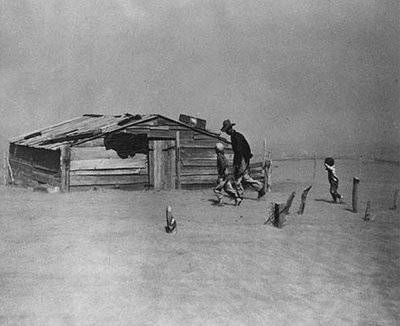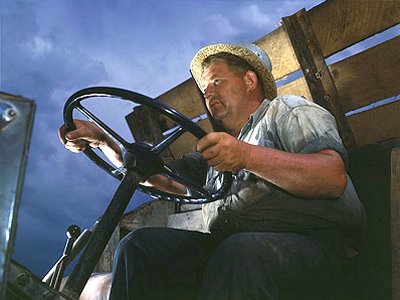The Depression...In Color
Almost any survey of the history of photography in the United States will make note of the Depression-era photographs made under the auspices of the Farm Security Administration (FSA). The photos were timely, as they influenced the U.S. Congress to support New Deal legislation. Longer-term, historically, they have shaped the world's collective memory of the Depression. The economic devastation that afflicted the land is mirrored to this day by the FSA's stark, black and white images. A classic example is Arthur Rothstein's Fleeing a Dust Storm.

FSA photographers made more than 160,000 such images. Many of them, such as the Rothstein photo and Dorothea Lange's Migrant Mother (see the Variable Focus archive for the entry of Feb. 15), are quite well known. Not so widely known are the 1,600 color photographs made by FSA photographers.
For the most part, photography reflects history rather than makes it. The poverty and hunger of the Depression years would have been crushing no matter how they had been pictured. But our collective memory is, perhaps, another matter. In our mind's eye, we see a Depression as Rothstein and Lange captured it, not a Depression that looks like this, as captured by photographer Alfred T. Palmer:
The picture could easily fit as an image from The Grapes of Wrath, but, as we have seen in other examples, color conveys an atmosphere far different from that of the moody, monochrome John Ford film. Perhaps, in a sense, the color even alters the message of the John Steinbeck novel or a nation's memory of a decade of hard times. It is a question that can be considered at length.
Meanwhile, to see more documentary photos from that era, here are links to the FSA black and white photographs, the FSA color photographs, and a quick slideshow of the color photos from the book Bound for Glory.

0 Comments:
Post a Comment
<< Home